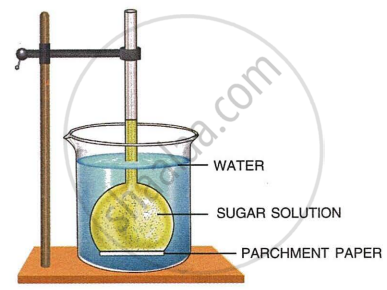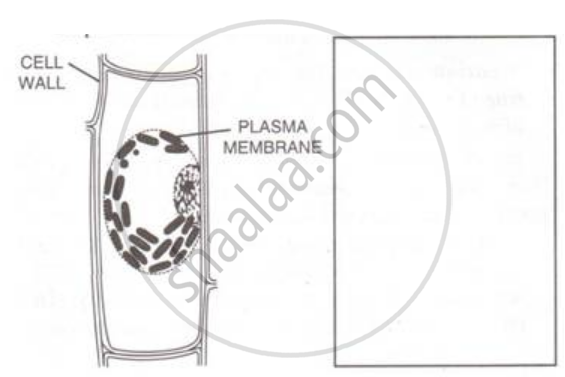Advertisements
Advertisements
प्रश्न
When a cell in solution shrinks and loses its shape, then the solution is ______.
विकल्प
Isotonic
Potable water
Hypotonic
Hypertonic
उत्तर
When a cell in solution shrinks and loses its shape, then the solution is hypertonic.
Explanation:
The solute concentration in a hypertonic solution exceeds that of cell sap. A cell kept in such a solution shrinks and loses water that moves out of it.
संबंधित प्रश्न
Give appropriate biological or technical terms for the following :
Movement of molecules of a substance from their higher concentration to lower concentration when they are in direct contact.
What is responsible for guttation?
The diagram given below represents an experimental set-up to demonstrate a certain process. Study the same and answer the questions that follow:

- Name the process.
- Define the above-named process.
- What would you observe in the experimental set-up after an hour or so?
- What control experiment can be set up for comparison?
- Keeping in mind the root hair, cell and its surroundings, name the parts that correspond to
- concentrated sugar solution
- parchment paper
- water in the beaker
- Name any other material that can be used instead of parchment paper in the above experiment.
- Mention two advantages of the process for the plants.
Distinguish between the following:
Turgor pressure and osmotic pressure
A leaf cell of a water plant was placed in a liquid other than pond water. After sometime, it assumed a shape as shown below:

Comment on the nature (tonicity) of the liquid surrounding the cell.
Give at least three uses of water to green plants
Give Reasons for the following.
Drops of water on a leaf of plant like peepal does not enter the leaf by osmosis?
Fill in the Blanks
Osmosis in the diffusion of _______ molecules from the region of higher _____ potential to that of lower potential across a S.P.M.
Mention, if the following statement is True or False. If false rewrite the wrong statement in its correct form:
Cells that have lost their water content are said to be deplasmolysed.
